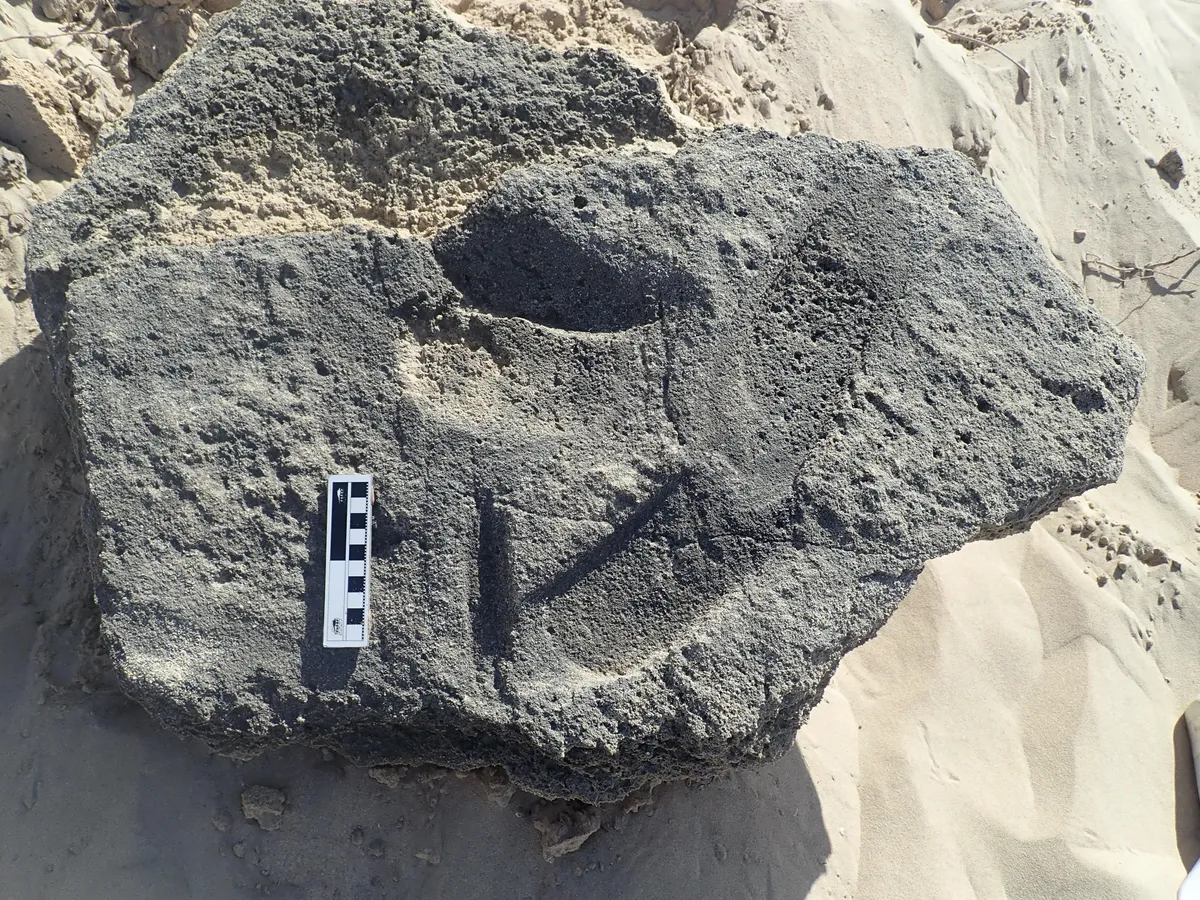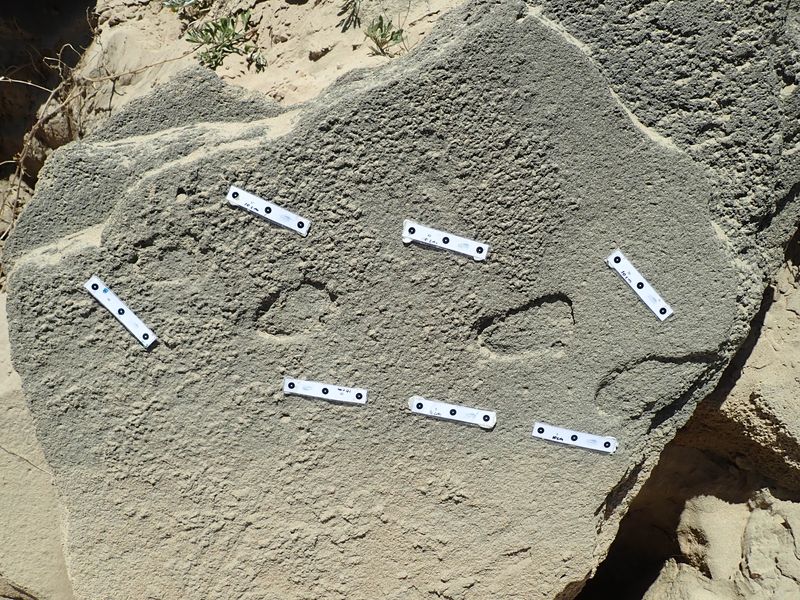A new analysis of ancient footprints in South Africa suggests that the humans who made these tracks might have been wearing hard-soled sandals. While researchers are reluctant to shoehorn in any firm conclusions regarding the use of footwear in the distant past, the prints’ unusual characteristics may provide the oldest evidence yet that people used shoes to protect their feet from sharp rocks in the Middle Stone Age.
The study authors examined well-preserved markings left on stone slabs at three different locations on the Cape coast, none of which have been directly dated. However, based on the age of other nearby rocks and sediments, the researchers suggest that tracks found at a site called Kleinkrantz may be between 79,000 and 148,000 years old.
Unlike barefoot human tracks, these footprints show no toes, yet displayed “rounded anterior ends, crisp margins, and possible evidence of strap attachment points.” Similar markings found at a site called Goukamma are estimated to have been left between 73,000 and 136,000 years ago, while a final example was located at The Woody Cape in Addo Elephant National Park.
“In all cases the purported tracks have dimensions that are broadly consistent with those of hominin tracks,” write the study authors. “The track sizes appear to correspond to the tracks either of juvenile trackmakers, or else small-adult hominin trackmakers,” they say.
To test this conclusion, the researchers made their own footprints wearing sandals resembling two different pairs of shoes used historically by the Indigenous San people of southern Africa, both of which are currently housed in museums. Experiments revealed that the use of hard-soled footwear on wet sand left prints with crisp edges, no toe prints, and indentations where the leather straps met the sole - just like the markings at Kleinkrantz.

“While we do not consider the evidence conclusive, we interpret the three sites […] as suggesting the presence of shod-hominin trackmakers using hard-soled sandals,” write the researchers. Offering a possible motive for the use of such footwear, they go on to explain that coastal foraging involves clambering over sharp rocks while also posing the risk of stepping on sea urchins.
“In the [Middle Stone Age], a significant foot laceration might have been a death sentence,” they say. In this scenario, sandals would have been a lifesaver.
The researchers’ reluctance to make any bold statements is understandable given the difficulty of interpreting rock markings, combined with the fact no actual shoes from the Middle Stone Age have ever been found. Any leather sandals from this period would have long since decomposed, leaving a 10,000-year-old pair of woven bark shoes from Oregon as the oldest surviving footwear in the world.
Other examples from Israel and Armenia have been dated to roughly 5,500 years old, while Ötzi the mummified Iceman was also found to be in possession of sandals when he was murdered a little over 5,000 years ago.
Prior to this study, the oldest indication of footwear use came from two prints left by Neanderthal children in a cave in Greece 130,000 years ago. Other Neanderthal tracks in France have also been interpreted as evidence of shod feet, though both cases are the subject of debate.
Highlighting the difficulty of such analyses, the study authors point out that tracks discovered in Nevada in the 1880s were initially attributed to a human wearing sandals, but later turned out to have been made by a giant sloth. “In this case non-hominin sloth tracks, quite different from those of barefoot hominins, were initially mistaken by professional palaeontologists for those of shod hominins,” write the researchers.
Not wishing to make such shoddy pronouncements, the authors sidestep the opportunity to make any major claims about their findings. However, based on their analyses, they speculate that “humans may indeed have worn footwear while traversing dune surfaces during the Middle Stone Age.”
The study is published in the journal Ichnos.




